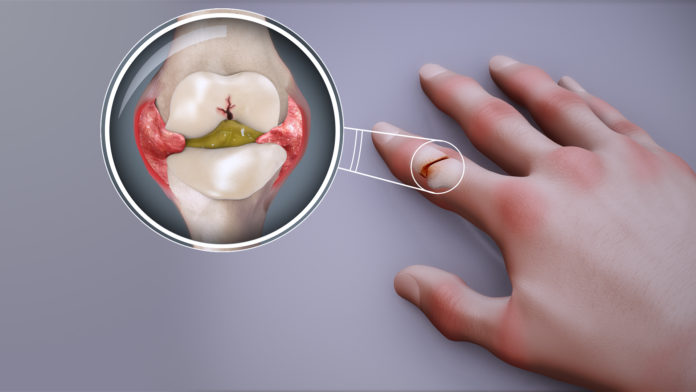
A rapid, non-invasive technology using infrared light can help doctors diagnose rheumatoid arthritis at an early stage and start treatment
An infrared light test for rheumatoid arthritis (RA) developed by a research team at the University of Birmingham could offer a fast, objective way to diagnose and monitor the joint-attacking autoimmune condition.
The rapid, non-invasive technique could help clinicians diagnose the disease at an early stage and assess how effectively the selected treatment is controlling the progression of the disease.
Rheumatoid arthritis (RA) is an autoimmune disease causing the body’s immune system to attack the lining of joints leading to painful inflammation and swelling. The current diagnosis relies on a combination of physical examinations by a consultant rheumatologist, blood tests, and scanning by x-ray or ultrasound.
The new technique combines 3D digital imaging with infrared spectroscopy to create a 3D image of the blood build-up inside a patient’s hands.
The rapid, non-invasive technique could help clinicians diagnose the disease at an early stage and assess how effectively the selected treatment is controlling the progression of the disease
The patient places her hand inside a scanner, which creates a 3D model of its size and contours. An infrared beam is then directed through each finger and the amount of light coming through the finger is measured. As oxygenated and deoxygenated blood absorb light differently, the infrared imaging can be used to calculate warning signs of RA such as hypoxia – lowered levels of blood oxygen – and increased levels of blood content, an indication of the inflammation typical of RA.
“We know that diagnosing patients with RA early is really important, because early treatment leads to better long-term outcomes,” explains Professor Hamid Dehghani, who led the study.
“The system we have developed offers a low-cost, objective way of detecting the disease and potentially grading how advanced it is. We hope, in time it will enable clinicians to diagnose the disease earlier and offer personalised treatment plans for patients,” he said.











